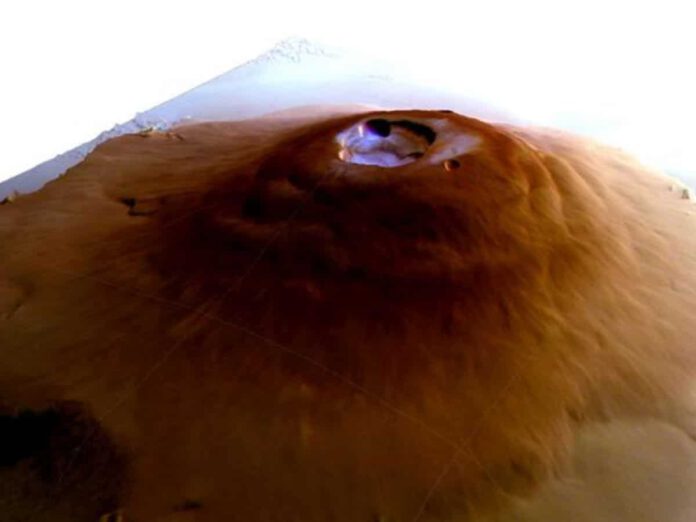
Surprising Discovery on Mars: Thin Layer of Frost Found on Volcano Summits
A few hours before sunrise, an extremely thin – yet extensive – layer of frozen water can be found on the peaks of record-breaking tall volcanoes on Mars. This unexpected conclusion comes from researchers who studied more than 30,000 photos of the Red Planet.
According to an article published in Nature Geoscience, the researchers focused on images of the Tharsis region, near Mars’ equator. This region is home to numerous massive volcanoes, including the towering Olympus Mons. This volcano, as wide as France and nearly 22 kilometers high, holds the record not only as the tallest volcano on Mars but also in the entire solar system.
An Unexpected Find
New research reveals that the summits of Olympus Mons and other volcanoes in the Tharsis region are sporadically adorned with a very thin layer of water frost. This is surprising, as researcher Adomas Valantinas explains. “We did not consider it likely that frost could form near Mars’ equator, as daytime temperatures – due to incoming sunlight and Mars’ thin atmosphere – are relatively high both at the surface and on the mountain tops.”
Temporary and Thin
Despite this, frost has now been observed on these high volcanoes. More precisely, it was found in the bowl-shaped craters at the volcano tops. The thin ice layer is present only a few hours before sunrise and evaporates as soon as sunlight reaches the volcano peaks. This layer of ice is extremely thin, roughly as thick as a human hair.
Extensive Coverage
While the ice layer is thin, it covers a substantial area and contains a considerable amount of water – estimated to fill around 60 Olympic swimming pools. During cooler seasons on Mars, this large amount of water alternates between being in the atmosphere (as water vapor) and on the surface (as a layer of ice on the volcano peaks).
The Discovery Process
The discovery of this ice layer was a long process. The first hints of its existence were found in high-resolution images taken by the Colour and Stereo Surface Imaging System aboard ESA’s Trace Gas Orbiter. To confirm the ice layer’s presence, additional observations from ESA’s Mars Express orbiter were utilized. Ultimately, the researchers analyzed over 30,000 images to verify and confirm the existence of these ice layers.
Microclimate Conditions
This is the first time frost has been discovered near Mars’ equator, raising questions about how this thin ice layer forms. Researchers have some theories. They suspect that the unique air circulation patterns above the tall volcanoes create a microclimate, allowing frost to form despite prevailing expectations.
In the future, scientists hope to gain more clarity on how exactly this thin ice layer forms. Understanding this could offer better insights into where water is located on Mars, how it moves, and the various processes occurring in Mars’ thin but complex atmosphere. This information is valuable for future manned missions to Mars (benefiting from the availability of water) and the ongoing search for Martian life or traces thereof.











